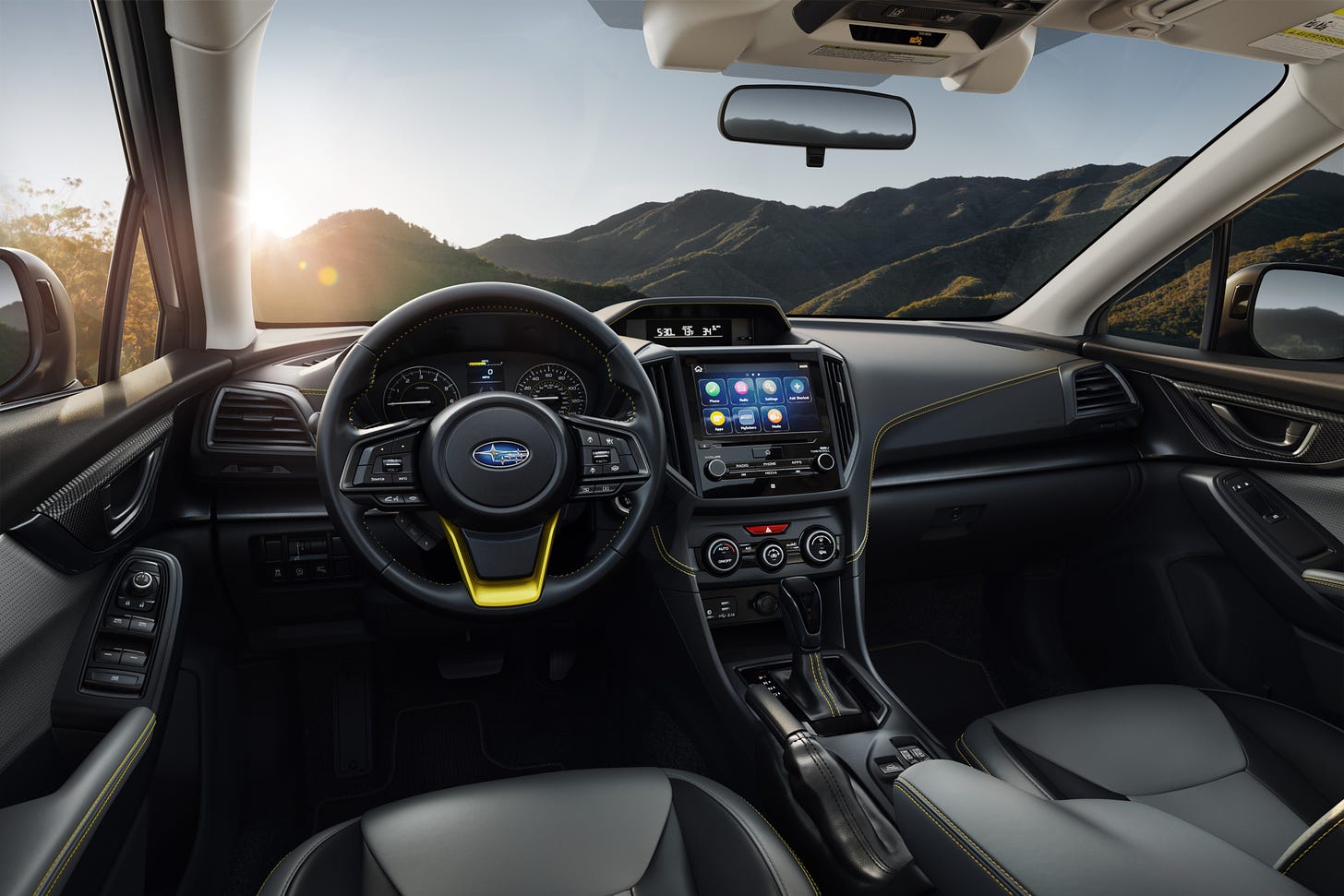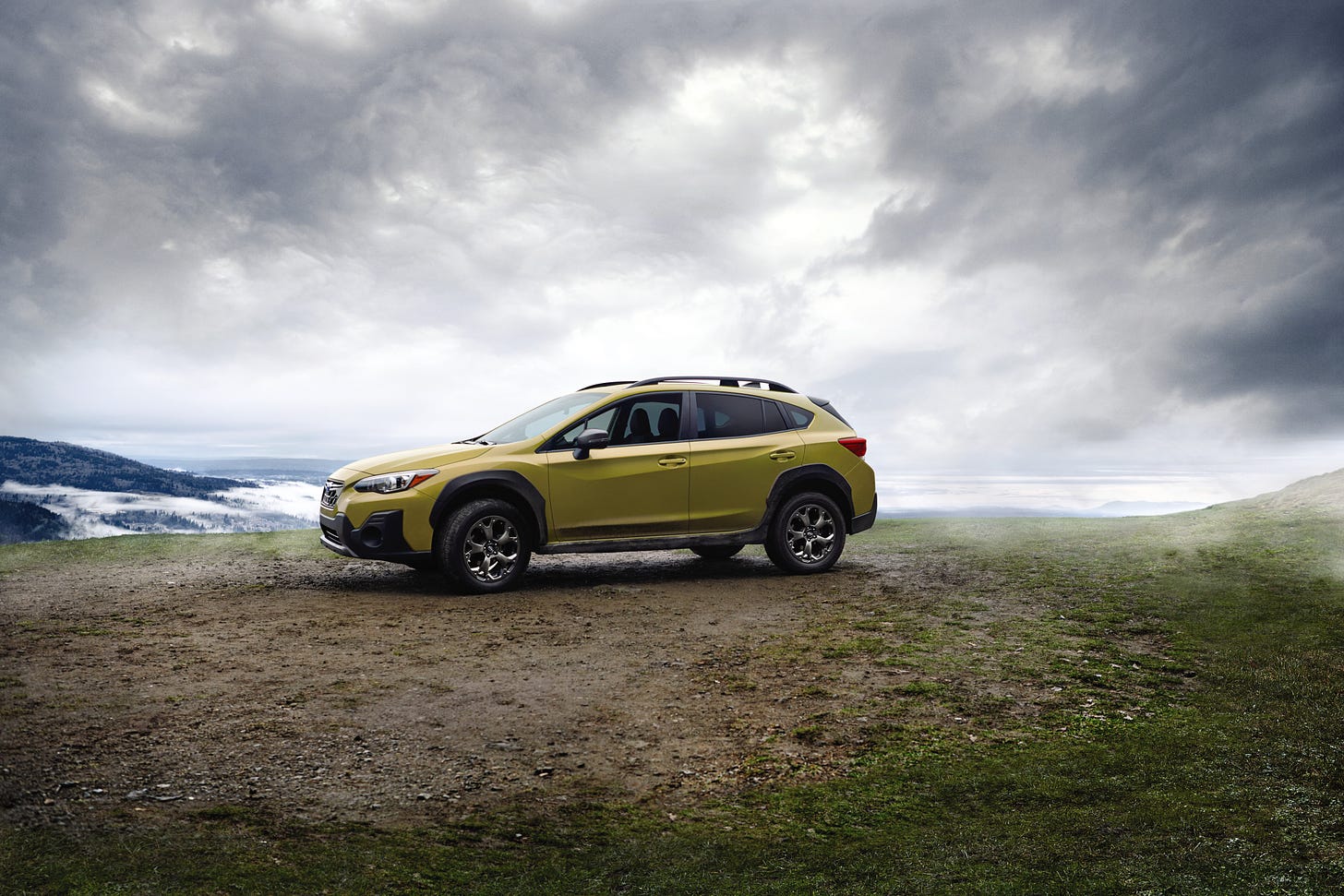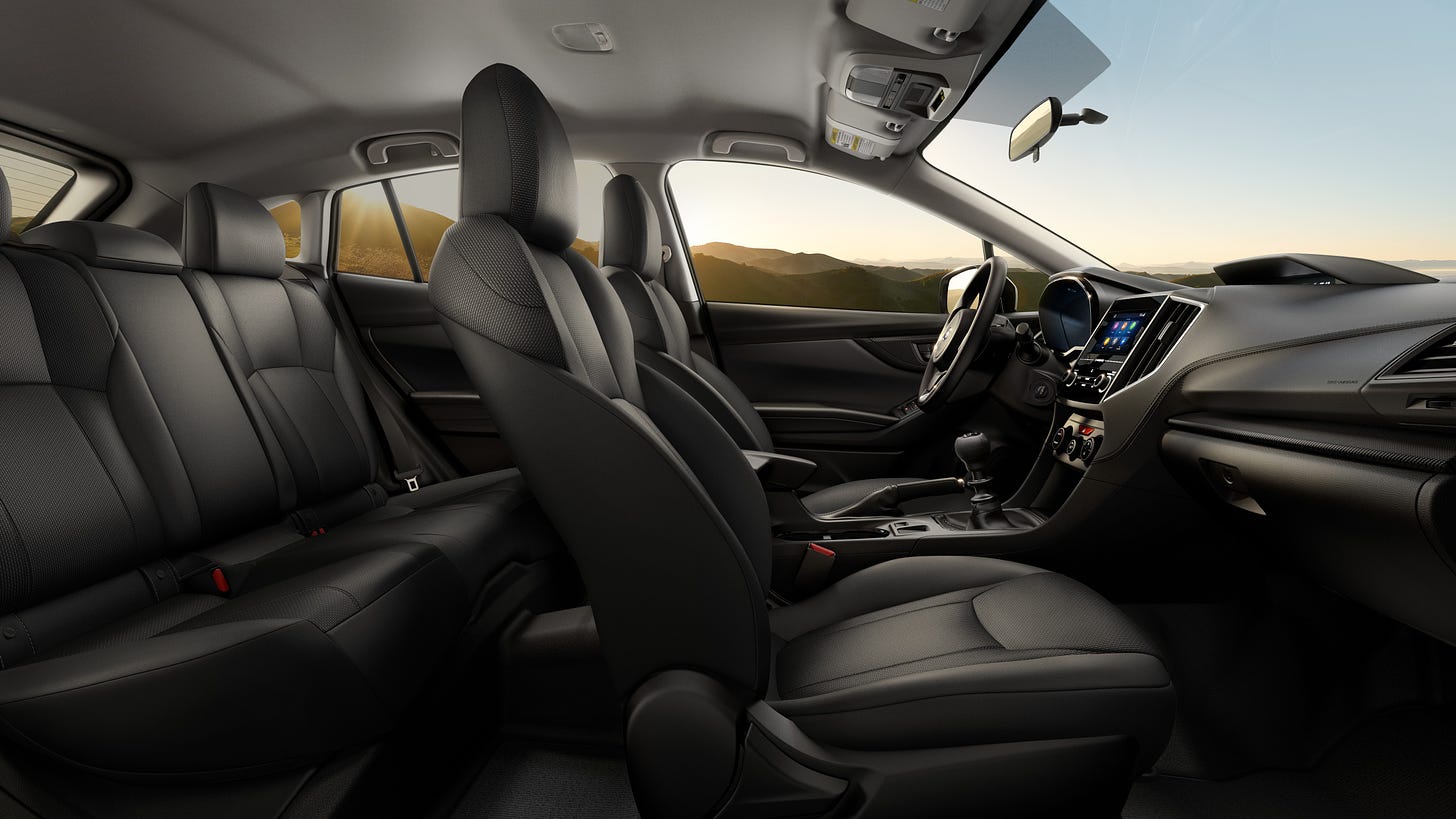SAN DIEGO — When I lived in Colorado, it sometimes seemed like the Subaru Crosstrek was the most popular vehicle in the world (aside from lifted pickup trucks, of course).
It’s easy to see why. At its core, the Crosstrek is a slightly-lifted Subaru Impreza, a small all-wheel-drive hatchback with terrific fuel economy and seemingly endless practicality. That means the Crosstrek is the same thing, only instead of being a car, it’s now magically a sort of SUV.
The Crosstrek is a small, all-wheel-drive hatchback with a 152 horsepower 2.0L four-cylinder engine with either a six-speed manual (!) or a CVT automatic, or you can get a slightly more powerful 182 hp 2.5L unit in the higher Sport and Limited trims, albeit with no manual option. There’s also a plug-in hybrid version that is a bit pricier and with limited availability.

I know the Subaru purists would be upset if I didn’t tell you that it has a Boxer engine which means nothing to most Crosstrek buyers. A boxer engine has horizontally mounted cylinders, lowering its center of gravity and making it slightly less mechanically complex.
I’m going to say something controversial: for most buyers, having all-wheel-drive doesn’t affect your day-to-day car use. Sure, it’s nice to have if there are occasional slippery conditions and you need some help getting going. That said, if you live in a part of the country with actual winter, you ought to buy a set of dedicated winter tires designed specifically for cold, snowy weather. People vastly overvalue all-wheel-drive, but I get that it’s nice to have.
All that said, the Crosstrek checks every single box. It’s relatively fuel efficient (30 or 29 mpg on CVT versions of the smaller and larger engines, respectively), uber-practical with its hatchback-slash-crossover design, and a kind of industrial-chic interior design. The buttons and knobs are big and chunky and easy to use with gloves on. The touchscreen supports wired Apple CarPlay and Android Auto.

For a car that starts in the mid $20,000 range, the Crosstrek is very well-equipped on the safety front. Subaru’s EyeSight system is standard, offering automatic emergency braking, lane departure warning and lane keep assist, and adaptive cruise control. Higher trims include blind-spot monitoring, rear-cross traffic alert, and swiveling headlights.
It used to be that the Crosstrek was woefully underpowered, though that didn’t seem to stop most buyers as they probably were unaware that it was underpowered. But the larger engine solves that problem, so if you test drive one and it seems slow, consider the higher-trim version.
I got in the Crosstrek feeling like it was just another hatchback — and it is, to an extent. But Subaru is a lifestyle brand, and its buyers readily identify with the mentality behind it. Driving a Subaru, like wearing a vest from North Face or Patagonia, tells the world that you love nature and that your car is all-wheel-drive and made with love (that’s what Subaru’s marketing department would have you believe, at least).

But as much as I make fun of Subaru buyers, I learned long ago that car buyers place enormous emphasis on what their car says about them. Choosing a Crosstrek over competitors like the Toyota Corolla or Mazda3 suggests that you might be a safety-conscious outdoorsy type, probably with a dog or two and a love of vests.
Whether you like the Subie vibe or just want basic transportation with all-wheel-drive, the Subaru Crosstrek continues to be a solid competitor that will satisfy any compact car buyer.


